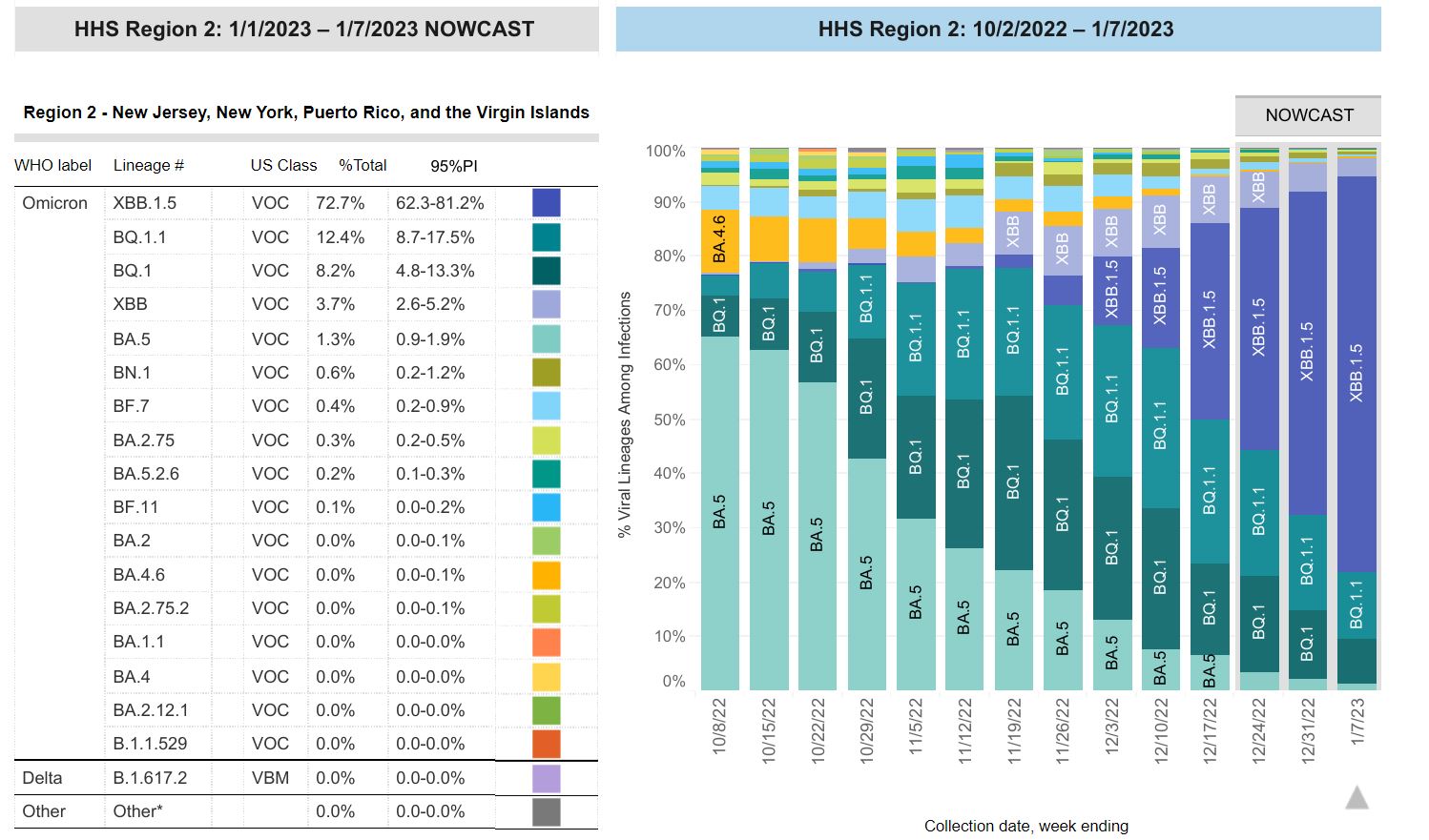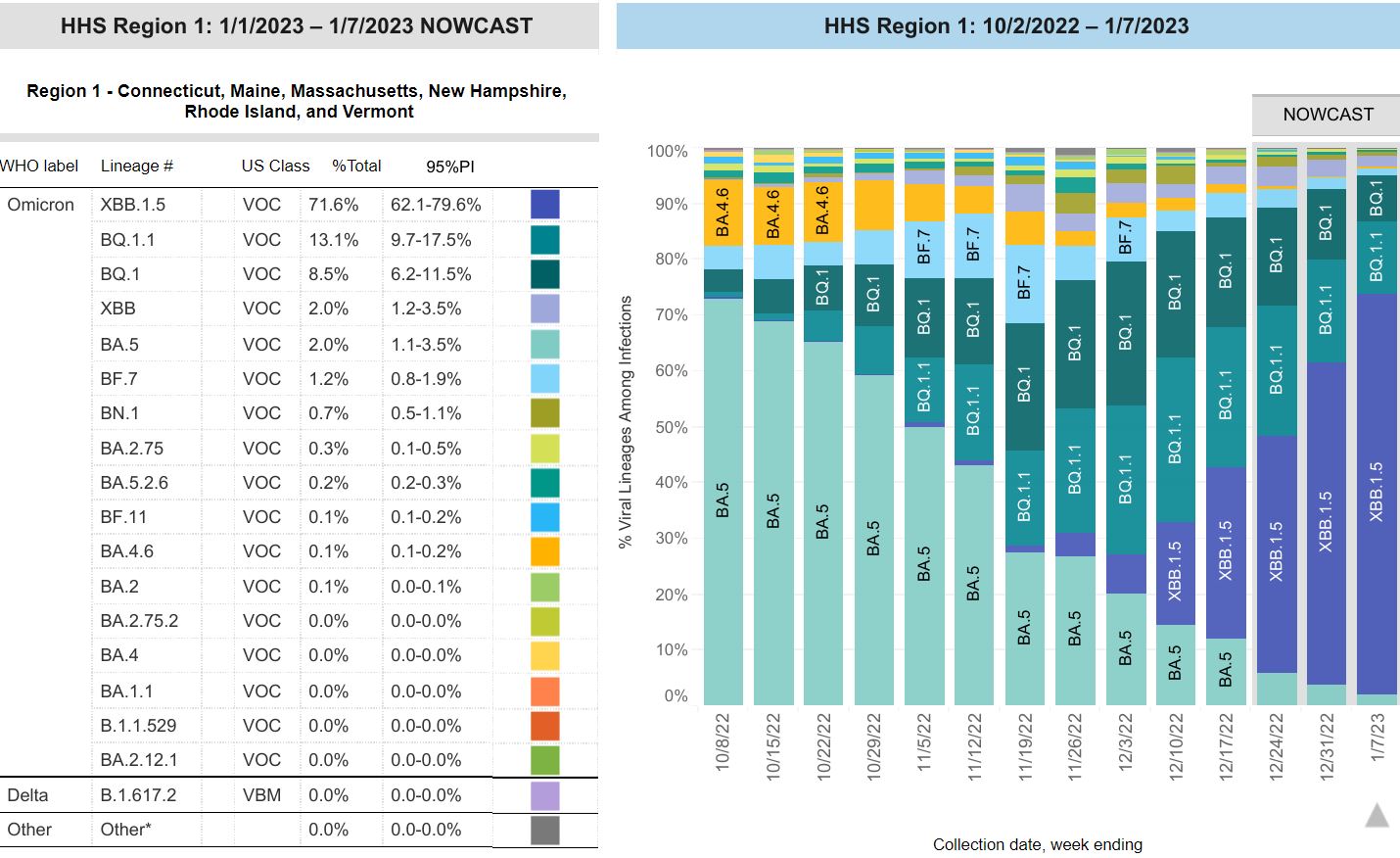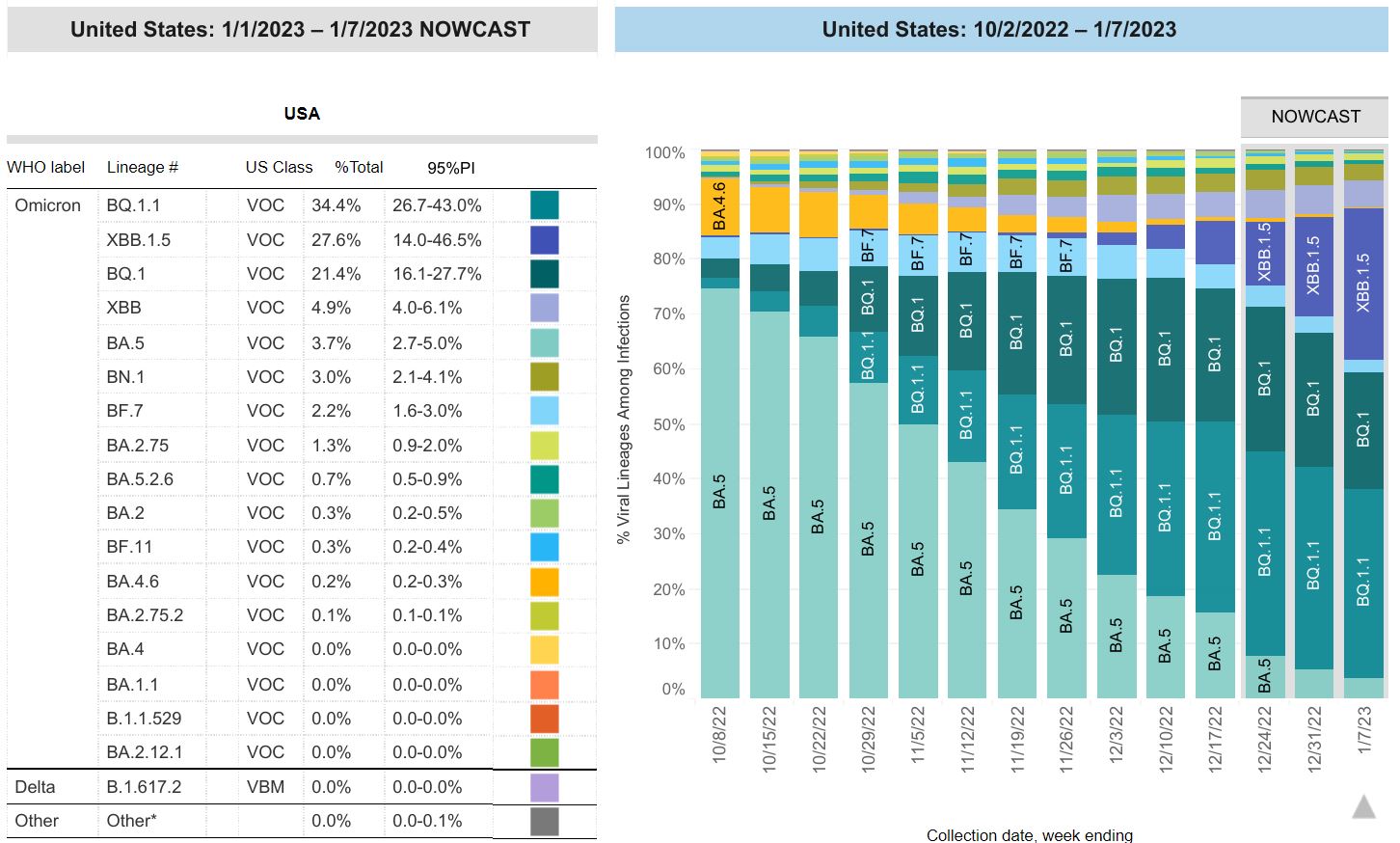What to Know
- You’ve probably heard about the XBB.1.5 variant; it’s the latest “most transmissible COVID variant yet” and appears to be better at binding to human cells, which may make it more adept at infecting
- There’s no evidence at this point that the strain, a combination of two prior omicron subvariants, is more lethal or more likely to cause COVID complications, but as a top White House official said this week, if you haven’t been vaccinated or infected lately, your protection probably isn’t so good
- Nowhere is XBB.1.5 more prevalent than in the northeastern United States, according to the CDC; in the New York region, it accounts for an estimated 73% of cases versus 27.6% nationally
The new most transmissible-yet COVID variant prompting renewed global wariness in recent weeks continues to assert its dominance in the New York City area, while the latest CDC data published Friday indicates a loosening grip on the nation as a whole.
That XBB.1.5 strain, another omicron descendant, is a highly contagious “recombinant” one spawned from two prior, and different omicron subvariants. Those two were considered more transmissible than their predecessors at the time they emerged, and the resulting fusion — XBB.1.5 — is believed to be that much more potent in terms of infectiousness.
As of the CDC’s Friday update, XBB.1.5 accounts for an estimated 73% of cases — and as many as 81.2% of virus circulating — in the agency’s New York region, which also includes New Jersey, Puerto Rico and the Virgin Islands.
Both shares are up considerably from the CDC’s last weekly update, which now includes the revised data (59.6% estimated prevalence with a high end of 70.3% for the week ending 12/31/2022). In other words, what was a high-range estimate for XBB.1.5 in New York last week doesn’t even cover where the CDC believes its share stands now.
What’s so special about this one? Scientists say XBB.1.5 has a mutation that makes it more adept at binding to human cells, which may make it better at infecting people compared with previous variants, including the wealth of strains that have descended from omicron in the last year and change.
New York City positivity rates are bearing out the transmissibility concerns, with more than a third of neighborhoods across the five boroughs now seeing those numbers in excess of 20% — and some spots topping 30% positivity. There’s no evidence at this point that XBB.1.5 is more lethal or causes more severe COVID infections, and the fact that the city’s rolling hospitalization rates haven’t shifted dramatically despite soaring transmission underscores the point.
Breaking Down COVID Variant Estimates by Region
NEW YORK REGION

The CDC’s Connecticut region, which includes Maine, Massachusetts, New Hampshire, Rhode Island and Vermont, also shifted considerably over the last week in terms of variant representation. The agency now estimates XBB.1.5 accounts for up to 79.6% of COVID circulating there, up from a revised high end of 67.3% a week ago.
CONNECTICUT REGION

UNITED STATES
Nationally, the latest CDC numbers mark a hard reversal from last week’s trends, which had put XBB.1.5 at about 40.5% of national cases (61% high range). Friday’s changes revise those numbers from last week down to 18.3% and 32.8%, respectively — and put the current estimated prevalence of the variant at about 27.6%. It’s not close to dominant.

While the public health threat has largely been contained via vaccination and boosters, and this variant, while more equipped to infect may not sicken people worse, the CDC and the World Health Organization have expressed concern over the rapid rate at which it is spreading throughout the northeastern United States.
Dr. Ashish Jha, the head of the White House COVID Task Force, addressed a number of points about XBB.1.5 in a lengthy Twitter thread earlier this week. He said the variant is “probably” more immune evasive than its predecessors and “may be” more contagious. He also stressed that if you had an infection before July or were last vaccinated prior to the bivalent update in September, “Your protection against an XBB.1.5. infection is not that great.”
In New York, state data shows COVID hospitalizations have returned to a six-month high and the rolling positivity rate (8.7% as of the latest update) is at its highest level since August. Given a looming nurses’ strike and ongoing flu and RSV concerns, the message is again to double down on protection, both for oneself and loved ones.
“I urge everyone to remain vigilant and continue to use all available tools to keep themselves, their loved ones and their communities safe and healthy,” Gov. Kathy Hochul said in a statement along with the stats. “Stay up to date on vaccine doses, and test before gatherings or travel. If you test positive, talk to your doctor about potential treatment options.”
The Democrat also continues to recommend New Yorkers get their bivalent COVID-19 vaccine boosters. To schedule an appointment for a booster, New Yorkers should contact their local pharmacy, county health department, or healthcare provider; visit vaccines.gov; text their ZIP code to 438829, or call 1-800-232-0233 to find nearby locations.

0 Comments